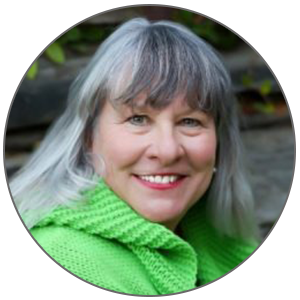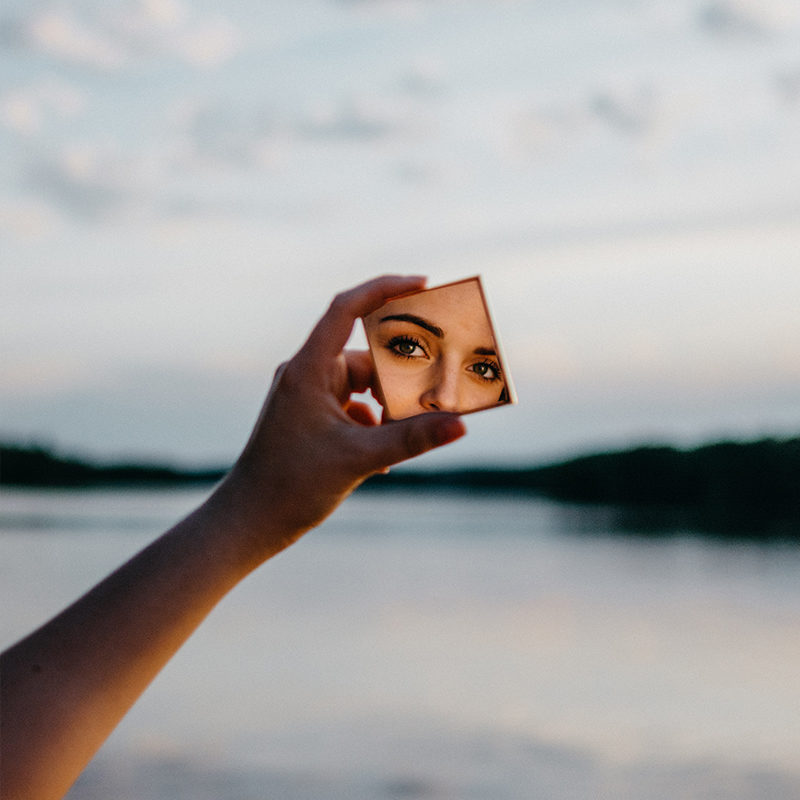Susan is stricken with grief. Her husband of 25 years died suddenly. There were so many unresolved questions that she only wishes she had asked him. There were the practical things, but there were also some core questions about what he believed would happen when he died? Is there a way to connect with him? Or even the experience of him, whether he is actually there, or not. And can it help her in her process of bereavement?
Am important insight for Susan is that she’s not alone. Indeed, various techniques have been developed over the millennia to establish the experience of contact with departed loved ones. Ancient Greek oracles reportedly engaged in a practice of gazing into reflective surfaces to enhance communication with spirits and deities. Based on this practice, Raymond Moody, a clinical psychiatrist, developed a technique for use in a clinical settings with bereaved patients: the psychomanteum. It involves a simple protocol that occurs in a dark, quiet room with a comfortable chair. A dimly illuminated mirror is placed slightly above the person’s head so that the reflection shows the darkened room and nothing else. This procedure can lead participants to experience imagery or other sensations, including perceptions that they are in contact with their loved one.
Several experimenters have conducted research to examine the psychological and parapsychological dimensions of ASC produced in the psychomanteum. Christine Simmons-Moore, a professor at the University of West Georgia, recently reported on a study making use of the psychomanteum at the August 2021 Convention of the Parapsychological Association and the Society for Scientific Exploration.
The British psychologist recruited participants who were synesthetes and non-synesthetes controls. Synesthesia is a neurological condition in which information meant to stimulate one sense (say hearing) also stimulates other senses (say seeing colors in your mind or smelling them in some way). This group of people provide a unique entre into the rich and complex nature of internal experiences. The research reported by Simmons-Moore included a series of questions about ghost experiences. These included asking about seeing a figure, perceiving a scent in a room, feeling contact with a deceased spirit, perceiving a warning voice or figure, as well as a general sense of presence. A series of questions about spatial location of perceived figures or felt presences were also included, in addition to an open-ended question asking what the experience was like.
As part of the study, an array of physical field detection devices were included. When synesthetes reported a perception that an invisible other was taking up physical space in the room, there was a significant deviation with random event generator (RNG) and geomagnetic field (GMF) activity. Additionally, there were associations with “infrared camera anomalies (“specks”), and RNG output in the psychomanteum, but not for the control baselines. These results provide important leads for using physical devices to help measure changes in the environment that correlate with experiences of invisible others.
My colleagues at Sofia University and I also reported on our study at the PA/SSE Convention. In this research we have expanded the psychomanteum protocol by comparing the physical setting of a room with one designed for a Virtual Reality (VR) environment. VR has been used to study a whole independent universe of conscious experiences when it is disconnected from an outside environment. The term “virtual embodiment” is used in the VR field to describe the physical process that employs the VR hardware and software to substitute a person’s physical body with a virtual one. Virtual embodiment under a variety of conditions may give rise to the subjective “illusions” of disembodiment such as NDEs or OBEs. The visual system and the ability to interpret the surrounding environment are essentially tricked into accepting the visual stimuli as real. The repercussions in the participants’ psychophysiology are real as well. The viewer reacts as if this is happening here and now.
Participants in both conditions (Chamber and VR) of our on-going psychomanteum study listen to a guided induction that enhances expectations of connecting with invisible others and engaging in meaningful communication with them. This is a process that invites active imagination and depth of experience in the psychomanteum. Our goals are to compare experiences of embodiment in the psychomanteum sensory deprivation chamber and through a VR psychomanteum application. We are also measuring depth of experience and shift in state of bereavement and grief for participants, and its interaction with absorption. This includes how engaged the person felt in the experience. Preliminary analyses suggest that people are having veridical experiences and that they are more pronounced in the VR condition.
Making use of VR technology may serve to expand and scale the psychomanteum technique for greater applications in various settings. This work may also provide an intersection of transpersonal psychology, neuroscience, and the evidence for survival of consciousness. The task in the creation of the psychomanteum VR experience is accessing altered states of consciousness through internal neural integration changes; this could be an Out of Body Experience (OBE), or a Near Death Experience (NDE). The transpersonal reports in the psychomanteum protocol can be transformative and may have powerful potentials for aiding people in their times of suffering, like Susan. Further, developing ways to reproduce these experiences opens a door for systematic research into the survival hypotheses, and the development of therapeutic approaches.
We are grateful to the Bial Foundation for their generous support of our research. Our team is currently recruiting volunteers to explore this psychomanteum experience. Do you have a VR headset? Want to try the psychomanteum from home and help us learn more about the experience? Contact Dr. Marilyn Schlitz to participate.
About the Author
 Marilyn Schlitz, PhD, is a social anthropologist, researcher, writer, and charismatic public speaker. She is the Dean of the Institute of Transpersonal Psychology at Sofia University and serves as President Emeritus and Senior Fellow at the Institute of Noetic Sciences. For more than three decades, Marilyn has been a leader in the field of consciousness studies. Her research and extensive publications focus on personal and social transformation, cultural pluralism, extended human capacities, and mind body medicine. She has a depth of leadership experience in government, business, and the not-for-profit sectors. Her broad and varied work has given her a unique ability to help individuals and organizations identify and develop personal and interpersonal skills and capacities needed by 21st century leaders. Her books include: Consciousness and Healing: Integral Approaches to Mind Body Medicine, Living Deeply: The Art and Science of Transformation in Everyday Life, and Death Makes Life Possible.
Marilyn Schlitz, PhD, is a social anthropologist, researcher, writer, and charismatic public speaker. She is the Dean of the Institute of Transpersonal Psychology at Sofia University and serves as President Emeritus and Senior Fellow at the Institute of Noetic Sciences. For more than three decades, Marilyn has been a leader in the field of consciousness studies. Her research and extensive publications focus on personal and social transformation, cultural pluralism, extended human capacities, and mind body medicine. She has a depth of leadership experience in government, business, and the not-for-profit sectors. Her broad and varied work has given her a unique ability to help individuals and organizations identify and develop personal and interpersonal skills and capacities needed by 21st century leaders. Her books include: Consciousness and Healing: Integral Approaches to Mind Body Medicine, Living Deeply: The Art and Science of Transformation in Everyday Life, and Death Makes Life Possible.
